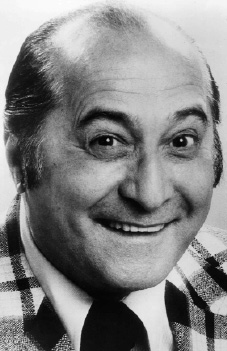Joey Faye
Joey Faye, among the greatest of second bananas, died on April 26th 1997, aged 87
In the art of making people laugh it was probably better to be the second banana than the top banana. The second banana was the clown taking the rise out of the straight man. Joey Faye was one of the greatest of all second bananas. Some people say he was one of the last. It is true that bananas of Mr Faye’s background are close to extinction, surviving mainly only in the memories of those in America old enough to have seen vaudeville or burlesque or, in England, music hall. But he showed during a career of nearly 70 years that comedy is immensely accommodating to whatever audience is out there waiting to be diverted.
Mr Faye himself became a banana when technology, in the form of radio, was starting to give people the excuse to take their entertainment at home rather than going out to a theatre. This was in the early 1930s, when Mr Faye was taken on as a comic at Minsky’s, a New York theatre that specialised in burlesque. “Those were depression days,” Mr Faye recalled. “But there was always room for burlesque comedians, because burlesque did business.”
Burlesque had a sexy reputation: that was part of its appeal. But in retrospect it seems an innocent sort of sexiness compared with the accepted prurience of today. Gypsy Rose Lee, a fellow star with Joey Faye, became famous for her striptease act. But she did not remove all of her clothes. The mayor of New York, Fiorello LaGuardia, would not allow such an exhibition. He feared that the sight of nude bodies would corrupt young people. Neither, observed Mr Faye, was “rough” language allowed on stage, such as “hell” or “damn”.
Whatever its reputation, burlesque was no more than the latest version of a popular entertainment that had its origin in the 19th century in touring minstrel shows and which had expanded into permanent variety theatres to cater for the massive growth in America’s population. By the 1920s the urban population of America had grown to 55m, with thousands more pouring in on every tide eager to do well, and the country was already the world’s largest economy, with an expanding entertainment industry to match.
The cultural and racial mix of the new Americans was reflected in showbiz. Just as jazz was born in the seaport of New Orleans from a blend of African and European sounds, so New York humour was shaped by talented immigrants. Mr Faye’s parents were Italian immigrants called Pallandino. Signore Pallandino worked as a barber, and his clients, in the captivity of their chair, would be told stories of his ancestors in the commedia dell’arte, an improvised song and dance entertainment that is the basis of English pantomime.
One thing Mr Faye’s family folklore taught him was that there was no such thing as a new joke in showbiz, just new ways of pushing a joke for laughs. He admired Lupino Lane, probably Britain’s best-known comic of the time, whose book How to Be a Comedian is still a reliable guide to a perilous trade. “In the comedy world there is nothing new,” he wrote, “but it’s not impossible to put your own new coat on an old coathanger.”

The old coathangers for comics in vaudeville and burlesque were, Joey Faye recalled, “big shoes and a red nose”. He started wearing “straight clothes” on stage. And, he found, you did not have to throw yourself about to hold an audience. A critic wrote of Mr Faye’s “quiet misbehaviours”. It was the start of something new. Other second bananas took to wearing jackets and ties, with perhaps a funny hat as a reminder of their old costume.
Mr Faye’s pay at Minsky’s rose from $25 a week to $300, about $3,700 in today’s money. Even bigger bucks beckoned. Mr Faye had parts in 36 Broadway shows, one of them called Top Banana. He wasin Man of La Mancha, a musical version of Don Quixote, playing Sancho Panza, Cervantes’s second banana. But for all bananas the lure was Hollywood. Such performers as Laurel & Hardy and Abbott & Costello had shown how the skills learnt on the boards before a live audience could be made to look as funny on the movies.
In showbiz reference books Mr Faye lists a dozen films in which he supplied comic diversion to the likes of Gary Cooper, John Wayne and Cary Grant, and a dozen shows in which he starred on television. But curiously, or perhaps not so curiously, he notes that his favourite part was as Gogo in Waiting for Godot, played in a theatre in Los Angeles. In Beckett’s play Gogo and Didi speak about the futility of life while waiting for the elusive Mr Godot.
Gogo: Why don’t we hang ourselves?
Didi: With what?
Gogo: You haven’t got a bit of rope?
Didi: No.
Gogo: Then we can’t.
The passage usually gets a laugh, but it takes a great banana to put it over well.